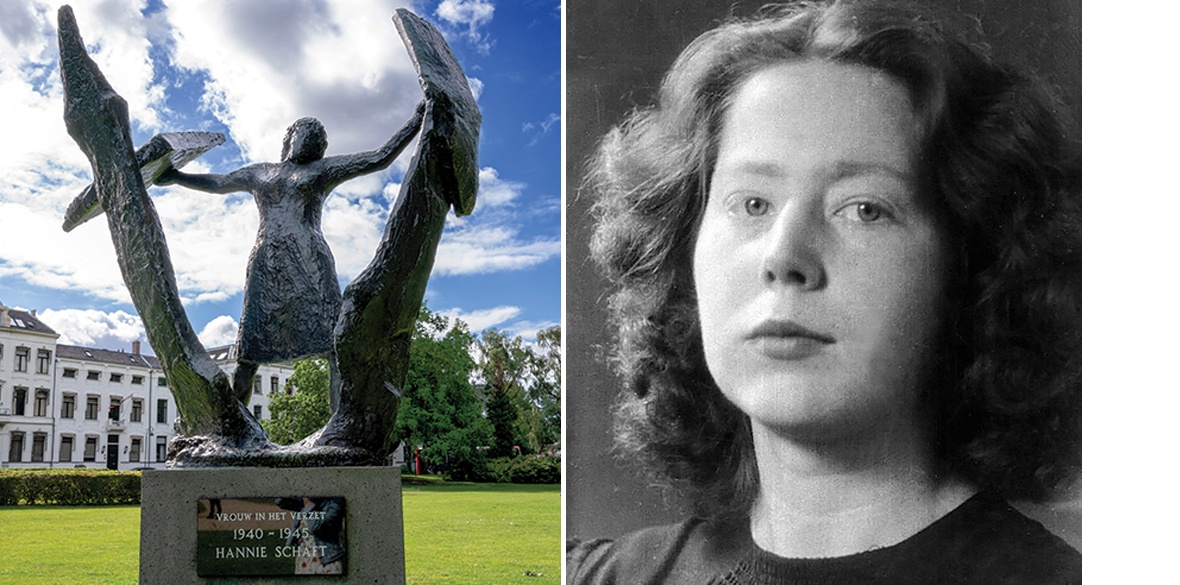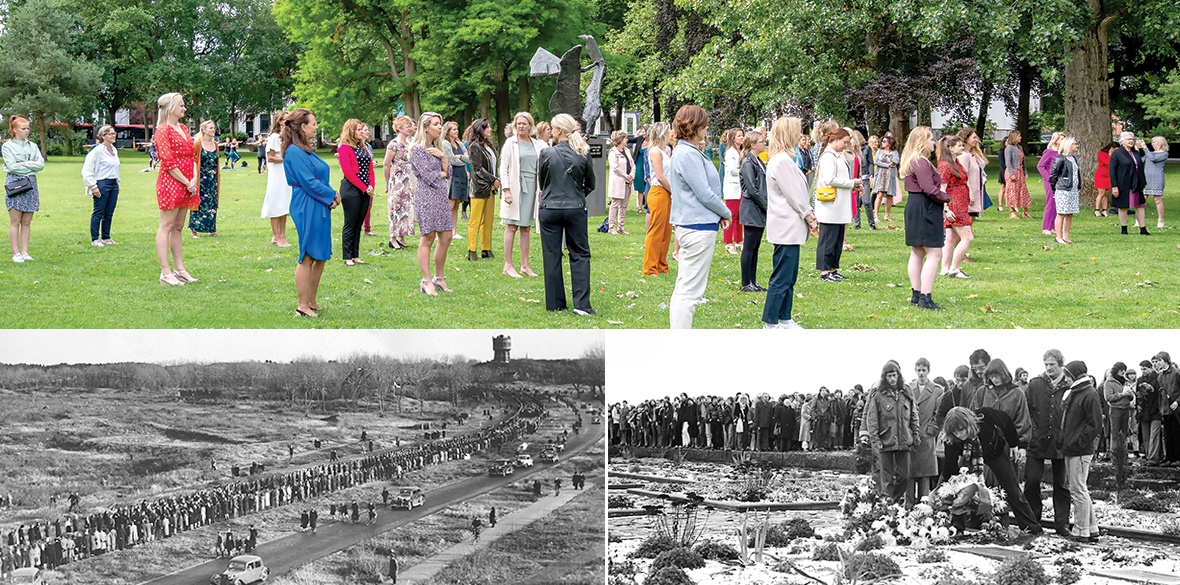This is the last article you can read this month
You can read more article this month
You can read more articles this month
Sorry your limit is up for this month
Reset on:
Please help support the Morning Star by subscribing here
ART IN THE OPEN
HANNIE SCHAFT MONUMENT, KENAUPARK, HAARLEM, HOLLAND
IN THE middle of the open spaces of Kenaupark in Haarlem, the Netherlands, a crowd of women stand in a vigil around a life-size bronze statue of Hannie Schaft.
Designed by Truus Menger-Oversteegen in 1982, it depicts the legendary Dutch WWII resistance fighter, legs and arms outstretched in an combative posture of defiance.
Freedom was, at the time, one generation away from being extinguished by fascism and Schaft — murdered at the tender age of 24 — epitomises the courage, diligence and ultimate sacrifice that it took to defeat what Brecht called “the nakedest, most shameless, most oppressive, and most treacherous form of capitalism.”
Who was Schaft?
Born 103 years ago on September 16 1920 in Haarlem Schaft was a WWII Dutch communist resistance fighter, alluded to as “the girl with the red hair” — Hannie was her nom de guerre.
She studied to become a human rights lawyer when, together with 80 per cent of fellow Dutch students, she refused to sign an oath of allegiance to the Nazis and joined the Raad van Verzet, or Council of Resistance, led by the Communist Party of the Netherlands.
Her assignments involved all matter of clandestine activities from courier and propaganda work to smuggling weapons, sabotage and the execution of Dutch Nazi collaborators and traitors. She spoke fluent German and was soon put on the Nazis’ “most wanted” list.
Schaft was part of a three-strong resistance cell that included the Oversteegen sisters, Truus and Freddie, both members of the communist youth who worked as nurses, whose parents were members of International Red Aid and Comintern.
The youthful looks of the trio were an advantage, providing ideal camouflage and allaying suspicion.
Highly principled, quick-witted and fearless, Schaft memorably refused to obey an order to kidnap the children of a Nazi official, arguing that, had the plan failed, the children would have to be killed which would make such an outcome no different from Nazi acts of terror.
On March 1 1945, Schaft and Truus Oversteegen executed the Dutch-Nazi police officer Willem Zirkzee in Haarlem. Two weeks later they wounded Ko Langendijk, a collaborator of the SS intelligence organisation Sicherheitsdienst (SD).
On March 21, however, Schaft was arrested at a military checkpoint in Haarlem while distributing the communist newspaper de Waarheid (The Truth).
Not immediately identified — her hair was dyed black at the time — she was taken to a prison in Amsterdam to be interrogated, brutally tortured and kept in solitary confinement.
Eventually the cover was blown when her hair grew enough to show its red roots, whereupon she was denounced by her former colleague Anna Wijnhoff.
Jannetje Johanna “Hannie” Schaft was taken from prison in April 1945 to the “killing fields” of the dunes of Overveen near Bloemendaal by Nazi Dutch police collaborators. Legend has it that when they failed to kill her with their first shot she famously derided them: “I can shoot better!” They responded with a burst from a submachine gun which ended her life.
Like many victims of the murderous Nazi apparatus, both Dutch and German, “Hannie” was buried in a shallow grave in the dunes where she was murdered. In total 422 bodies of resistance fighters where exhumed there after the war.
Eight months later, on November 27 1945, she was reburied at the Dutch Honorary Cemetery in Bloemendaal in the presence of members of the Dutch government and the royal family, including Queen Wilhelmina who called Schaft: “the symbol of the Resistance.”
She was awarded the Dutch Resistance Cross and received the Presidential Medal of Freedom from General Dwight Eisenhower, as well as the Righteous Among the Nations title from Israel.
Schaft’s assassin Maarten Kuiper was found guilty in 1948, sentenced to death and executed. Somewhat puzzlingly there are no records of the second killer, Mattheus Schmitz, ever being prosecuted.
When McCarthyism corrupted public life in the US its pernicious anti-communist delusions spread well beyond US borders and included the Netherlands.
Communist resistance fighters were suddenly targeted by servile media to such an extent that in 1951 the Dutch government attempted to ban the annual commemoration of Schaft’s death at her grave.
A mass protest of over 10,000 people prevented this but many were swayed as the political pendulum of the cold war had swung across western Europe.
From 1952 communists hold the commemoration in her place of birth, Haarlem, on the last Sunday of every November.
A number of schools and streets were named after her. She’s been a subject of films and books, Rianne van Ineveld and Ineke Verdoner wrote a song about her.











